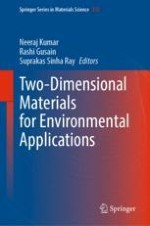2023 | OriginalPaper | Buchkapitel
7. Adsorptive Removal of Pollutants Using Graphene-based Materials for Water Purification
verfasst von : Lesego Tabea Temane, Jonathan Tersur Orasugh, Suprakas Sinha Ray
Erschienen in: Two-Dimensional Materials for Environmental Applications
Aktivieren Sie unsere intelligente Suche, um passende Fachinhalte oder Patente zu finden.
Wählen Sie Textabschnitte aus um mit Künstlicher Intelligenz passenden Patente zu finden. powered by
Markieren Sie Textabschnitte, um KI-gestützt weitere passende Inhalte zu finden. powered by
